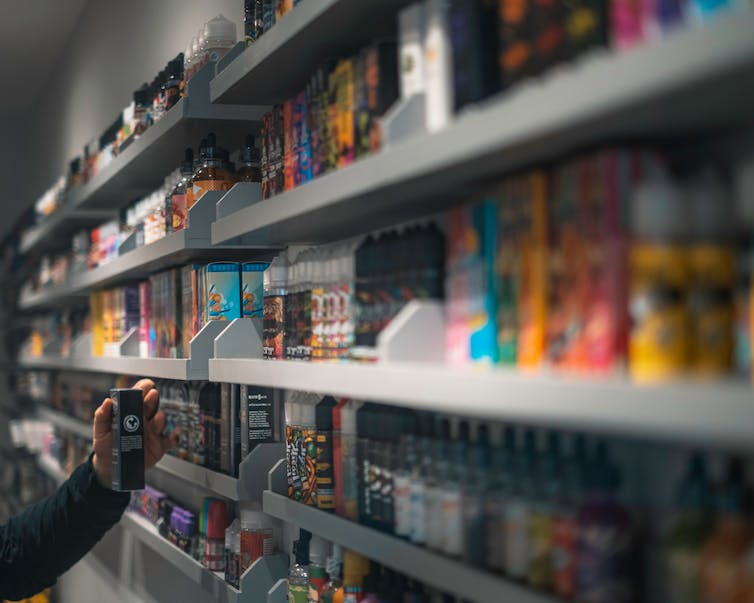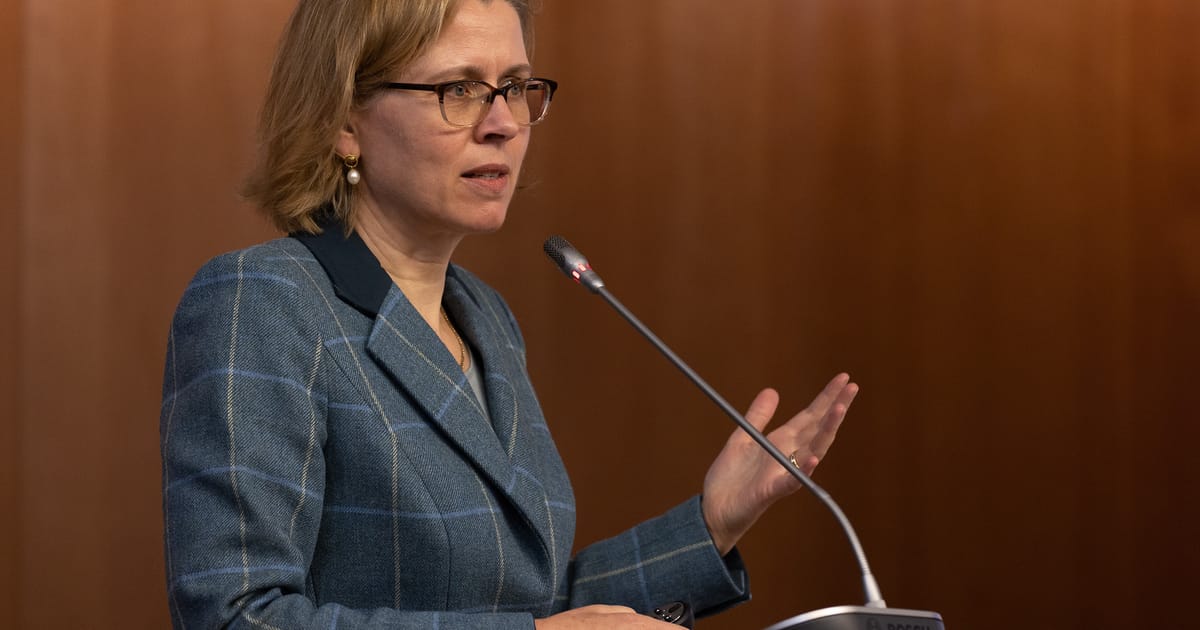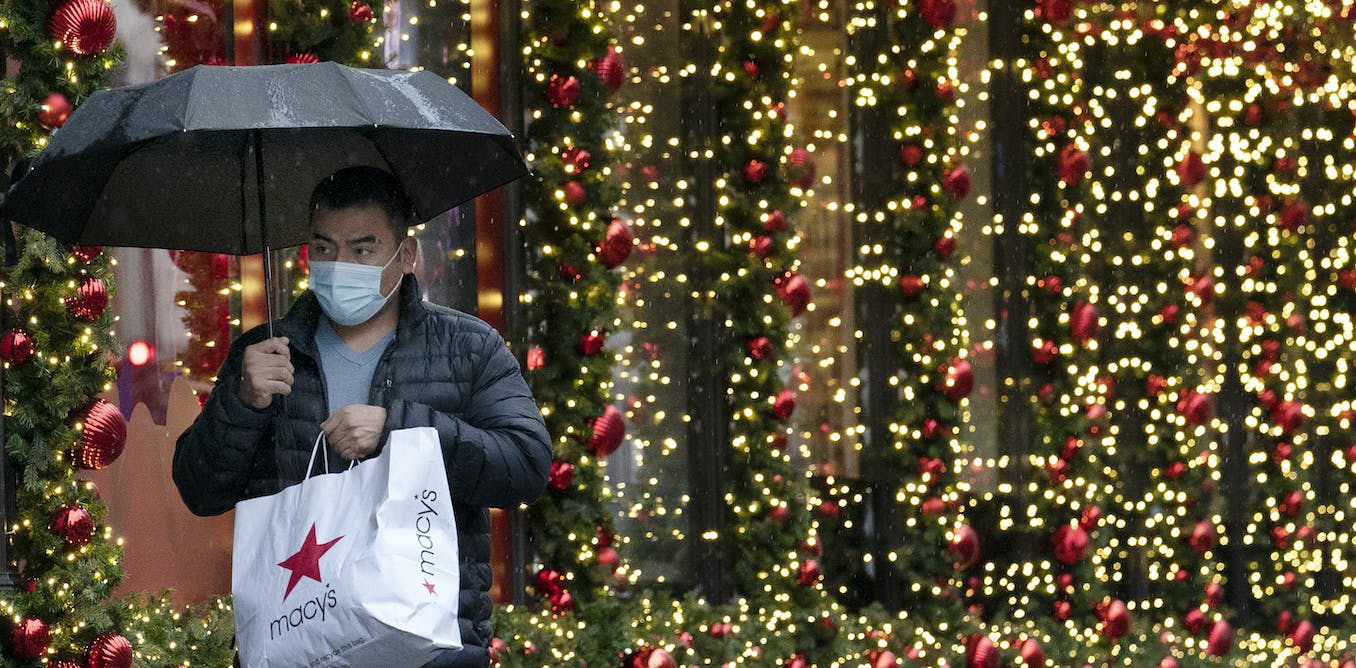This year the Australian government is introducing a series of measures to restrict the availability of vapes, starting today.
The new reforms address loopholes in the current laws that allow easy access to highly addictive, flavoured, cheap, and harmful vaping products that are marketed to kids.
Vaping products will still be available through a prescription for anyone using them to quit smoking. But the Therapeutic Goods Administration will tightly regulate prescription-only vapes.
So what are the new regulations? And why are they needed?
What’s in vapes? Toxins, heavy metals, maybe radioactive polonium
What was wrong with the previous regulations?
Before the 2024 rule changes, vaping products imported and sold in Australia were required to be nicotine-free, unless accessed through a pharmacy with a prescription from a qualified health professional.
Individual users were also allowed to import nicotine-vapes from overseas through the Personal Importation Scheme, provided they had a valid prescription.
The vaping industry – including manufacturers, importers and retailers – exploited these loopholes and openly sold products containing nicotine to young people by falsely claiming the products were “nicotine-free”.
But the only way to tell the difference between a nicotine and nicotine-free vape is to test it in a lab – a time consuming and expensive endeavour, given the high volume of products imported.
So enforcing the nicotine/nicotine-free standards essentially proved near impossible against an industry determined to addict a new generation of users.
So what’s changing?
The new laws help tidy up the confusion and make the rules much clearer and easier to enforce.
They also address the ready access to vapes, which is the single biggest challenge to preventing young people from vaping.
The regulatory changes will be rolled out in three phases:
1. Importation ban
The first phase, being implemented from today, includes a ban on the importation of all disposable, single-use vapes. These are the products that are most popular with young people and come in a variety of flavours, including fruit, confectionery, cocktails and tobacco.
Single-use, disposable vapes cannot be refilled, but come in a wide range of sizes, from a few hundred of puffs, to upwards of 10,000 puffs.
Disposable vapes have flooded into Australia and fuelled the explosive rise in vape use among teens and young adults.
E-Liquids UK/Unsplash
The importation of all other vapes, including refillable products, will be banned from March 1 2024, unless importers hold a licence and permit from the Office of Drug Control to lawfully import vapes. These legally imported vapes will only be sold in pharmacies to users with a prescription.
The Personal Importation Scheme allowance for vapes will also end on March 1 2024, meaning all vape users must access vaping products from a pharmacy in Australia.
TGA review strengthens case for much tighter vape restrictions at the border
This initial phase, while effectively stopping illegal vapes from coming in to Australia, doesn’t address the high volume of product that is already here. Retailers will be able to continue to sell their existing stock of “nicotine-free” vapes. But as we know, these products often do contain nicotine.
2. Domestic manufacture and sales ban
The next phase of reforms, expected to come into effect in late 2024, will eliminate the retail sale of all types of vaping products, regardless of their claimed nicotine content.
This second phase will include a ban on the manufacture, supply, advertising and commercial possession of vapes that fall outside of the prescription framework.
These changes will require amendments to the Therapeutic Goods Act 1989, and will likely be introduced in Autumn 2024 for federal Parliament’s consideration, but the exact date is yet to be set.
3. Prescription access

Shutterstock
The prescription access to vapes for therapeutic purposes is also being changed to allow access to products that meet a quality standard.
From today, all medical and nurse practitioners will now be able to prescribe therapeutic vapes for quitting smoking or to manage nicotine dependence.
Further changes that strengthen the standards for therapeutic vapes are expected to be made by March 1 2024. For example, prescription vapes will have limits on the amount of nicotine, the types of flavours permitted, and be in standardised medical-style packaging.
What do the changes mean for vape users?
Vapes for therapeutic purposes will continue to be permitted in Australia and more medical professionals will be able to prescribe them. Prior to 2024, only select medical professionals could prescribe vapes (they had to register as an authorised prescriber). This is being widened to ensure the prescription model works as intended.
While vaping products will be available by prescription it’s important to know they remain unapproved medicines that have not been subjected to the same rigorous safety and effectiveness testing as other evidence-based quit smoking aids.
If you’re thinking of quitting smoking (or quitting vaping), get support by talking to your doctor, calling the Quitline (13 7848), or accessing help online.
My teen is addicted to vaping. How can I help them quit and manage their withdrawal symptoms?




